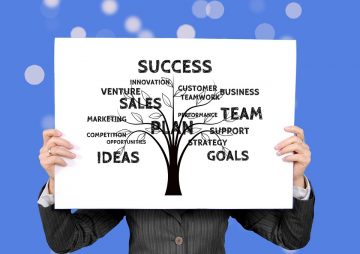
What Sets Supply Chain Optimization Leaders Apart from the Crowd?
Mark Barry | Aberdeen Group
Research shows that 92% of companies want to use mobility to make their supply chains more event-driven, promote warehouse and transportation efficiency, and make omnichannel fulfillment more profitable.
Given the ever-growing demand for consumers to order from anywhere, fulfill from anywhere, and return to anywhere, the overwhelming desire to optimize the supply chain shouldn’t come as a big surprise.
However, just because 92% of companies want to optimize their supply chains to be more profitable doesn’t mean they’re actually succeeding. The reality is that some companies are putting distance between themselves and their peers in terms of supply chain optimization.
Drawing the Line Between Leaders and Followers in Supply Chain Optimization
Leaders in this space have adopted advanced automation capabilities with cloud-connected interoperability. What has this innovation amounted to? The differences between Leaders (the top 30% of performers) and Followers (the remaining 70% of organizations) include:
- Orders delivered to customers complete and on time: Leaders see 95.4% successful delivery compared to just 86.4% for Followers.
- Orders received from suppliers complete and on time: Leaders see 94.6% success in this supply chain transition compared to just 84.8% for Followers.
- Landed per unit costs: Year over year, Leaders have decreased their total costs by 0.5% compared to an 8.5% increase for Followers.
- Out-of-Stock inventory costs: Through automation and optimization, Leaders have decreased their out-of-stock frequency by 7.5% year over year. In contrast, Followers have seen a 0.9% increase in out-of-stock inventory rates.
Cloud-connected interoperability enable Leaders to better-synchronize profitability and service levels across customer cost-to-serve, products, and omni-channel logistics flows. But what capabilities, specifically, are making these Leaders more profitable?
The Customer Fulfillment Optimization Capabilities that Make a Difference
The world’s best eCommerce companies are increasingly capable of balancing cost and service — even as omni-channel demands force them to change their long-standing process and strategies.
Balancing cost and service requires a unique set of customer fulfillment optimization capabilities, many of which the industry’s Followers haven’t implemented, including:
- Cost-to-Serve Modeling at Item/Product/Customer Level: Put simply, the cost-to-serve is the measurement of costs to get products to customers. However, there are many steps involved in cost-to-serve modeling. As omni-channel demands put pressure on supply chains, some companies neglect certain aspects of cost-to-serve modeling. Leaders in this space are 3.5x more likely to implement cost-to-serve modeling at the item, product, and customer levels.
- Supply and Demand Flexibility: Moving away from batching means shifting to more dynamic supply chain operations to meet customer demands in real time. This may require capacity constrained shipments as well as land rebalancing based on changes in supply and demand. Leaders are 2x more likely to take implement these capabilities than Followers.
- Segment Based on Customer Profile Data: Segmentation helps eCommerce businesses customize their supply chain models based on specific customer profiles. However, being this dynamic is difficult for many organizations. Leaders are nearly twice as likely as Followers to segment their supply chains based on customer profile data.
These are just a few of the capabilities where Leaders set themselves apart from the crowd in terms of supply chain optimization. All of them, though, require cloud-ready systems and processes that leverage big data to get closer to real-time service.
